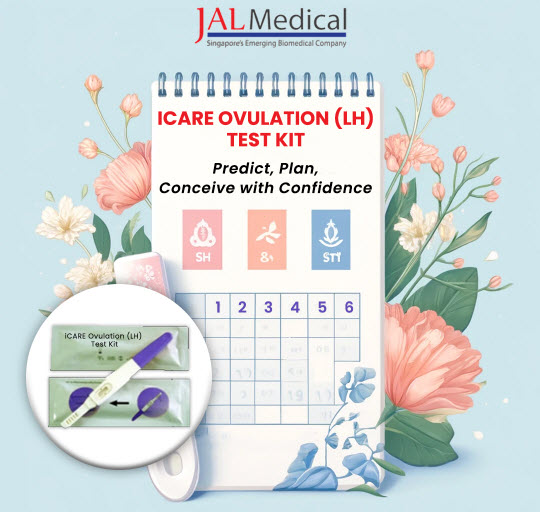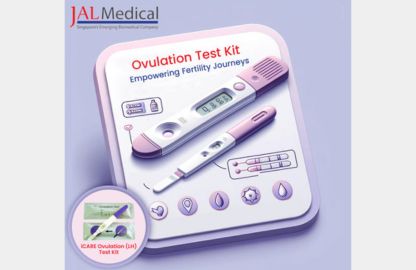Table of Contents
Objective
This article aims to examine the expanding demand for ovulation test kits across various cities in Laos, offering insights into regional trends, consumer behavior and healthcare dynamics shaping this shift. The analysis focuses specifically on local usage patterns, not on product advantages or comparisons.
Introduction:
In recent years, Laos has seen a marked increase in awareness regarding reproductive health tools, with particular attention to ovulation test kits. These tools, once rare and unfamiliar to the average consumer, are now steadily becoming part of the personal healthcare routines of women across the country. This growth in demand reflects broader changes in healthcare access, education and cultural openness toward fertility planning.
Unlike in the past, when fertility awareness was limited to consultations at medical centers, many Laotian women are now opting for self-administered options like ovulation predictor kits and ovulation test strips. Factors contributing to this trend include urbanization, the influence of digital health platforms and exposure to neighboring healthcare markets. Importantly, this change is not confined to the capital but is beginning to take root in multiple cities and regions throughout Laos.
Vientiane: The Epicenter of Ovulation Test Kit Usage
As the capital and most populous city in Laos, Vientiane sets the pace for many health-related trends and the use of ovulation test kits is no exception. Here, access to pharmacies, clinics and online health platforms is more widespread, making it easier for women to find and purchase ovulation monitor kits.
Private healthcare providers and pharmacies in Vientiane often stock a variety of ovulation detection kits, reflecting consistent consumer demand. In many cases, pharmacists report that customers prefer kits with clear instructions and visual indicators. Educational programs in the capital also play a role by integrating fertility tracking into broader reproductive health initiatives.

The younger generation in Vientiane – particularly women between the ages of 25 and 35 – shows the highest adoption rate. These women are more likely to rely on test ovulation kits due to their convenience, discretion and perceived reliability. Word-of-mouth, peer networks and social media platforms continue to amplify awareness, creating a supportive environment for increased usage.
Luang Prabang: A Steady Rise in Fertility Tracking Tools
Luang Prabang, known for its cultural heritage and growing tourism sector, is also seeing a rise in the use of ovulation prediction kits. While not as fast-paced as Vientiane, this city is benefiting from improved healthcare infrastructure and a more informed population, especially among younger urban dwellers.
Pharmacies and health centers in Luang Prabang have begun to include ovulation check kits in their inventory due to growing customer inquiries. Women here often turn to these products for reasons related to privacy and the convenience of home-based fertility tracking. The city’s engagement with mobile technology and digital health resources is playing a key role in normalizing the use of these kits.
Local health workers have observed that newly married women and those preparing for family planning consultations are increasingly interested in kit to check ovulation options. In some cases, women discover these products through online content or fertility-focused health apps that support Laos’ local language.
Savannakhet: Cross-Border Influence Boosting Ovulation Kit Demand
Located near the Thai border, Savannakhet is a unique case where cross-border trade significantly influences healthcare purchasing behaviors. Women in this city often have greater exposure to products available in neighboring countries, including various types of ovulation rapid test kits.
The market in Savannakhet is expanding primarily through local distributors and informal sellers who bring in products from Thailand. The demand for ovulation test strips here is growing steadily, especially among women working in the formal employment sector who prioritize planning their family life with more autonomy.
Pharmacies in Savannakhet now offer a wider range of fertility tools than ever before and discussions around reproductive health are becoming more normalized. The rising use of ovulation predictor kits can also be linked to health-focused community events where cycle tracking and family planning are openly discussed.
Pakse: Emerging Interest in Self-Administered Ovulation Detection Kits
As a major economic center in southern Laos, Pakse is gradually embracing tools like ovulation test kits. Although the pace of adoption is slower compared to Vientiane or Luang Prabang, there is clear evidence of growth in awareness and availability.
Women in Pakse often depend on community pharmacies to access healthcare tools. Many pharmacists report a steady increase in the number of customers asking for ovulation strips. This city’s expanding middle class and improved digital infrastructure are contributing to a broader understanding of reproductive health.
Interestingly, educational campaigns in Pakse focus on maternal and newborn health, which may inadvertently support interest in ovulation test tools. As family planning becomes a more accepted part of community health dialogue, products like ovulation monitor kits are likely to become even more common.
Thakhek: Regional Distribution Hub Increasing Accessibility

Thakhek, located in central Laos, serves as an important transit and logistics hub. This has allowed for more consistent supply chains of medical and personal health products, including test ovulation kits.
Healthcare professionals in Thakhek are seeing increased interest from both urban and peri-urban populations. Women here often learn about ovulation detection kits through local clinics or peer-to-peer recommendations. Though online shopping is still limited in this region, physical pharmacies are adapting by including basic fertility tools in their offerings.
This access allows more women to make informed decisions about family planning. Thakhek’s growing healthcare networks may soon introduce targeted educational programs to expand the understanding and proper usage of ovulation prediction kits.
Champasak: Traditional Beliefs Meet Modern Fertility Tools
Champasak province blends traditional Laotian beliefs with increasing exposure to modern health practices. Although deeply rooted in culture, many women are now open to using self-monitoring tools like ovulation test strips to understand their fertility cycles.
Health clinics in Champasak report that women often seek information first through healthcare providers before making a purchase. This cautious approach is slowly evolving into more independent decision-making, especially among younger women who are beginning to use ovulation monitor kits at home.
While not yet widespread, these tools are becoming more accessible in community pharmacies. The trend here suggests that gradual exposure, supported by healthcare education, will continue to encourage local women to explore kit to check ovulation options.
Muang Xay and Oudomxay: Ovulation Kit Penetration in Northern Laos
Northern cities like Muang Xay and Oudomxay present a mixed picture. These regions are less developed in terms of healthcare distribution but show early signs of interest in ovulation rapid test kits. Awareness is mostly driven by health outreach programs and visits by mobile health units.
Language remains a barrier, especially with imported ovulation check kits that lack proper instructions in Lao. However, NGOs working in women’s health have started to include fertility tracking in their educational sessions. Though still limited, access is gradually improving as community awareness increases. Pharmacies here carry fewer options, but local demand is growing. As road and telecom infrastructure improve, these areas may soon see a more consistent flow of ovulation predictor kits, aligning them with the national trend.
Sekong and Attapeu: Low Access, Emerging Curiosity
In the remote provinces of Sekong and Attapeu, the presence of ovulation test kits is minimal. These areas face challenges such as limited healthcare infrastructure, lower digital penetration and fewer pharmacies.
Despite these hurdles, curiosity is growing, particularly among women engaged in government jobs or those returning from urban centers. Exposure to test ovulation kits often occurs through visits to larger cities or via relatives. While usage is not yet common, local NGOs have reported increased inquiries about fertility tracking methods.
A potential solution for these regions lies in mobile health units that can carry and explain the use of ovulation detection kits as part of broader reproductive health campaigns.
Conclusion:
The growing demand for ovulation test kits in Laos marks a significant shift in how reproductive health is viewed and managed across the country. From the bustling pharmacies of Vientiane to the emerging markets in Pakse and Luang Prabang, Laotian women are gradually embracing these tools to support personal health goals.
Each city reflects a unique stage of adoption. Urban centers like Vientiane and Savannakhet lead with high accessibility and consumer awareness. Mid-sized cities such as Luang Prabang and Pakse are catching up, supported by local healthcare networks and educational outreach. Meanwhile, rural and remote regions like Sekong and Oudomxay show early signs of interest, highlighting the need for broader infrastructure and health education.
As Laos continues to develop its healthcare ecosystem, the availability and understanding of ovulation monitor kits, ovulation check kits and related fertility tools will likely expand. Continued public health efforts, culturally sensitive education and improved supply chains may allow these products to become a staple in women’s health management across the entire nation.








